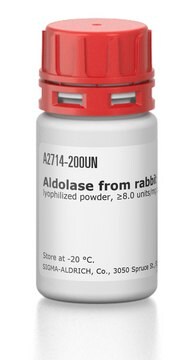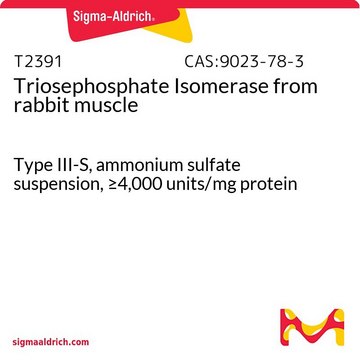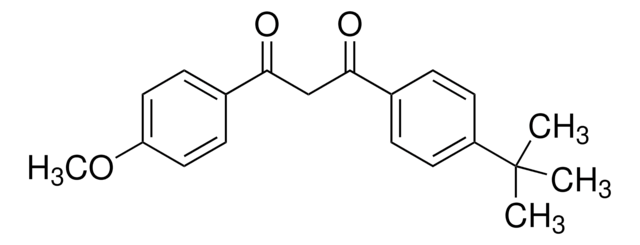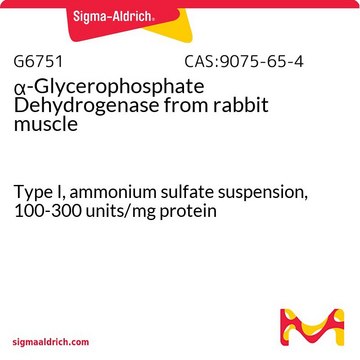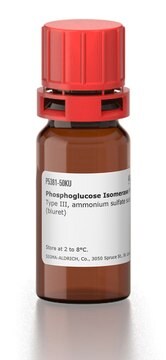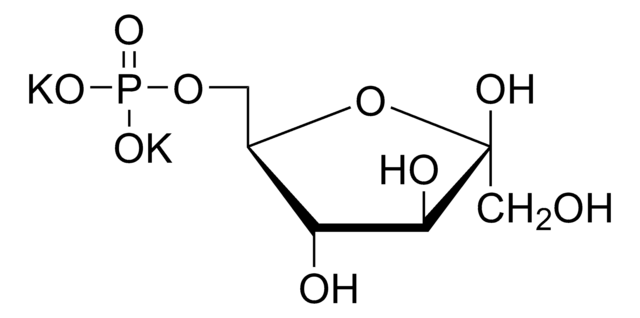T2507
Triosephosphate Isomerase from baker′s yeast (S. cerevisiae)
Type I, ammonium sulfate suspension, ~10,000 units/mg protein
Sinónimos:
D-Glyceraldehyde-3-phosphate ketol-isomerase, TPI
About This Item
Productos recomendados
type
Type I
Quality Level
form
ammonium sulfate suspension
specific activity
~10,000 units/mg protein
mol wt
53 kDa by equilibrium centrifugation
foreign activity
pyruvate kinase, lactic dehydrogenase, 3-phosphoglyceric phosphokinase, phosphoglucose isomerase, α-glycerophosphate dehydrogenase, aldolase, and glyceraldehyde-3-phosphate dehydrogenase <0.01%
storage temp.
2-8°C
Application
Unit Definition
Physical form
Analysis Note
Other Notes
Storage Class
11 - Combustible Solids
wgk_germany
WGK 3
flash_point_f
Not applicable
flash_point_c
Not applicable
ppe
Eyeshields, Gloves, type N95 (US)
Elija entre una de las versiones más recientes:
Certificados de análisis (COA)
¿No ve la versión correcta?
Si necesita una versión concreta, puede buscar un certificado específico por el número de lote.
¿Ya tiene este producto?
Encuentre la documentación para los productos que ha comprado recientemente en la Biblioteca de documentos.
Los clientes también vieron
Artículos
Instructions for working with enzymes supplied as ammonium sulfate suspensions
Nuestro equipo de científicos tiene experiencia en todas las áreas de investigación: Ciencias de la vida, Ciencia de los materiales, Síntesis química, Cromatografía, Analítica y muchas otras.
Póngase en contacto con el Servicio técnico

